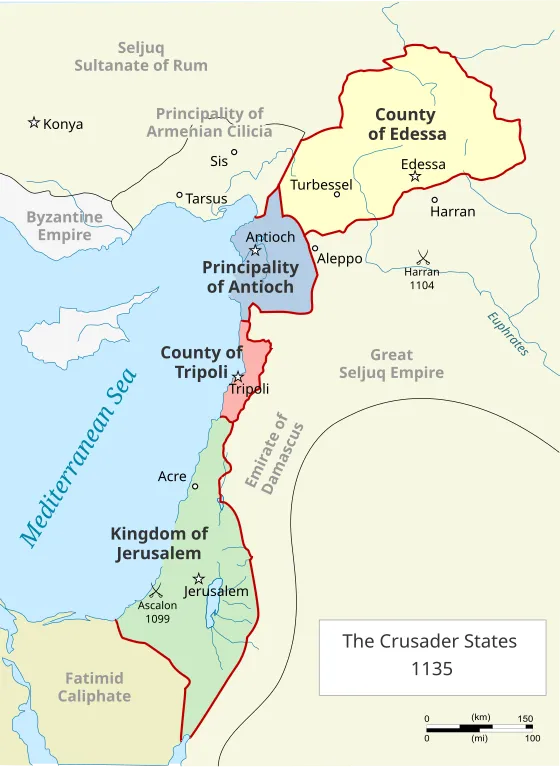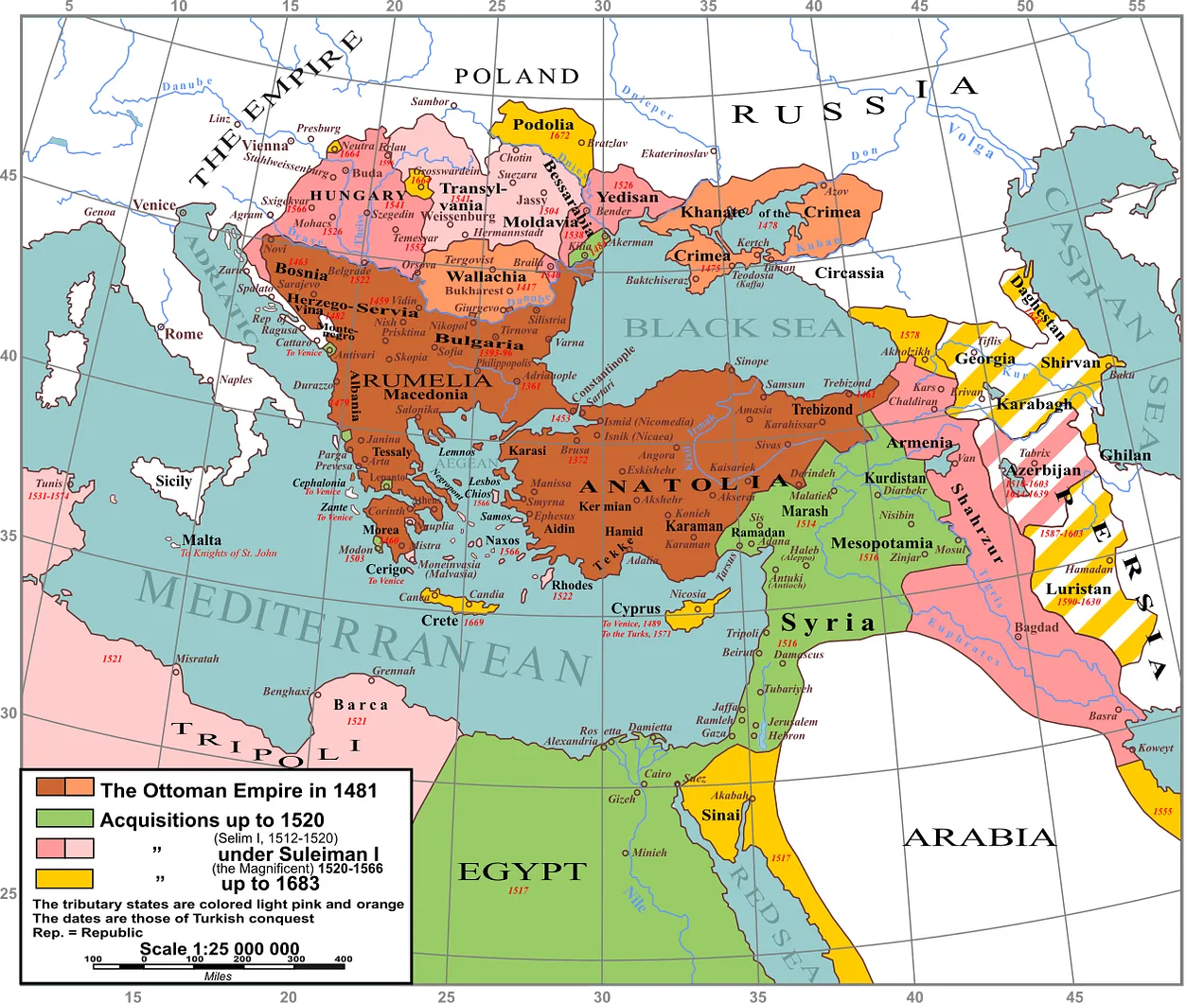Contents
Introduction
The History of Syria
The Assad Dynasty
Concluding Remarks
Bitesize Edition
The recent collapse of the Assad regime was unexpected. Assad and Syria had spent the last year in a frozen conflict, re-engaging with many other international actors, and rejoining the Arab League. For Assad, there were signs of positivity.
What was also unexpected was the sheer speed at which the Assad regime collapsed. HTS branched out from the Idlib province, taking Aleppo and Hama with relative ease. After Assad fled and resurfaced in Moscow, it was confirmed that the Assad dynasty had come to an end in Syria.
And so, with much unknown about this dramatic change in Syria, it’s worth diving deeper into this issue. Before exploring the present day, we need to dive deeper into the history. How did the history of Syria contribute to the present-day environment? When did the Assad dynasty rise and how did Assad contribute to the journey that took Syria down the road towards a civil war? Let’s dive in below.
Introduction
A few weeks ago, when the rapid collapse of the Assad regime in Syria ensued, many sources were releasing articles and videos that were outdated in a few short hours. This collapse moved rapidly, and so as I usually prefer to do, I decided to wait. With more time, we can assess the history of Syria and how it led to the current events. Over the coming weeks, we’ll explore the civil war, the key players involved, and where Syria goes from here.
The History of Syria
The Middle East is known for its rich religious history. Especially when exploring prehistoric Syria, books upon books could be written on the topic.
I’ll start with slightly more modern history when Syria was a part of the Persian Empire in 539 BC. As Iran does today, the Persians showed a great interest in controlling and influencing the land bridge that created a path to the Mediterranean. As a consequence of these aspirations, the Persians controlled Syrian territory.
The period of Persian rule ended with the conquests of Alexander the Great, the Macedonian-Greek king, in 333-332 BC. Syria was incorporated into the Seleucid Empire as a result of this conquest. Soon after, the empire fought a series of six wars named the Syrian Wars with the Ptolemaic Kingdom of Egypt. This heavily drained the resources of both empires and paved the way for a well-known empire to enter, take advantage of this weakness, and reap the rewards. This was the Romans.
Antioch, the capital of Syria during the rule of the Seleucid Empire, became the third biggest city in the Roman Empire, after Rome and Alexandria. After the Western Roman Empire collapsed, Syria remained under the umbrella of the Byzantines, also known as the Eastern Roman Empire. This lasted until the 7th century, when the Rashidun army conquered Syria, integrating the territory into their Islamic Empire.
The history of Syria becomes more chaotic after this. The Caliphate collapsed in the mid-8th century. The Umayyad dynasty, who had placed Damascus as the capital of their empire, were overthrown by the Abbasid dynasty in 750, and they moved the capital to Baghdad.
Syria was then ruled by the Egyptians, the Ikhshidids, and the Hamdanids. They even experienced a period of anarchy!
The Byzantines returned in 969 and clashed with the Hamdanids and Damascus-based Fatimids. The Byzantines reclaimed all of Syria by 996, but the Fatimids and Buyids of Baghdad ensured stability never occurred during this period of rule for the Byzantines.
The Seljuk Turks, the Burid dynasty, the Zengid dynasty, and the Ayyubid dynasty of Egypt all controlled regions of Syria before the Crusader States of the First Crusade took control of parts of Syria. The Great Seljuk Empire also continued to control regions of Syria at the same time.
Even the Mongols arrived in the Syrian region in 1260. After they withdrew, the Mamluks of Egypt invaded and conquered Syria, eliminating the last of the Crusader footholds in Syria.
In 1400, the Timurid Empire defeated the Mamluks at Aleppo and captured Damascus. This period led to many of the city’s inhabitants being massacred and saw heavy persecution of Christians in Syria.
In 1516, we had the Ottomans arrive in Syria. I’ve discussed this entire history in my series on the Balkans, and so I’ll only loosely refer to it here.
I’m aware my coverage of multiple centuries of Syria‘s history was shortened dramatically. Thankfully, this next period requires no shortening. The period of Ottoman rule in Syria persisted until 1918 when the empire collapsed at the end of World War One. The Iranian Safavids made two brief captures of Syrian territory during this period, but neither was particularly long-lasting.
When the Ottoman Empire collapsed, we truly entered a period of chaos in the Middle East. The French and British had agreed on the partition of the Middle East in the Sykes-Picot Agreement in 1916. In 1918, Arab and British troops took Aleppo and Damascus. Two years later, Syria was a French-controlled mandate of the League of Nations. In my history on Israel and Palestine, I argued that Sykes-Picot was a major precursor for the chaos that the Middle East continues to be embroiled in today.
Syria was divided into three separate regions under the French, with an Alawite State on the coast and a Druze state in the South. Nationalist revolts emerged in 1925 across all of Syria and parts of Lebanon. These ceased in 1927, and elections in 1928 were held to seek a constituent assembly which would draft a constitution. When the French High Commissioner rejected these claims, further nationalist protests emerged. In 1930, the State of Syria was declared the Republic of Syria and a constitution was written by the French High Commissioner.
Syria and France finally negotiated a treaty of independence in 1936, after over a decade of Syrians pursuing this independence. It was agreed in principle with the French maintaining military and economic dominance. This treaty never came into effect after the French refused to ratify it. As France fell in 1940, Syria was controlled by Vichy France until the British and Free French occupied the country after their 1941 Syria-Lebanon campaign. Syria was finally recognised as an independent republic on January 1st, 1944. The French were slow to withdraw, and the British were also present for periods during the next two years, but finally, Syria fully gained independence on April 17th, 1946.
For the next decade, Syria had twenty different government cabinets and drafted four constitutions. They were involved in the Arab-Israeli conflict in 1948 and were pushed back to the Golan Heights before an armistice was agreed with Israel in 1949. A UN-supervised demilitarised zone was established, and this became a large stumbling block for any future negotiations between Syria and the Israelis.
1949 saw three coups in the aftermath of Syria’s involvement in the Arab-Israeli conflict. Adib Shishakli seized power in the third coup in an attempt to prevent a union with Iraq that the previous leadership were pursuing. He was overthrown in 1954 by another coup, in which the Arab Socialist Ba’ath Party was involved. Since Syria had struggled to establish any institutions, the military and security establishment seemed to be the only force capable of enacting influence and gaining power. For Syria’s future, the Ba’ath Party certainly understood this.
In 1956, Syria signed a pact with the Soviet Union as a direct consequence of the Suez Crisis. Coming out of the Suez Crisis, Egyptian President Gamal Abdal Nasser’s strong leadership created support for a union between Syria and Egypt. This union occurred on February 1st, 1958, and created the United Arab Republic. Discontent with Egyptian dominance in this union led Abd al-Karim al-Nahlawi to seize power three years later in September 1961. Two days later, the Syrian Arab Republic was established.
A March 1963 coup finally saw the Ba’ath Party gain monopolistic control of Syria. They did this through the installation of the National Council of the Revolutionary Command, which assumed control of all executive and legislative branches of government.
The Ba’ath National Command was overthrown in 1966 by General Salah Jadid. The 1967 Six-Day War and the loss of the Golan Heights saw Jadid’s popularity collapse.
In 1970, the period of the Assad dynasty began, when Minister of Defence Hafez al-Assad gained power in a bloodless coup.
Keep reading with a 7-day free trial
Subscribe to Geopolitics Explained to keep reading this post and get 7 days of free access to the full post archives.








